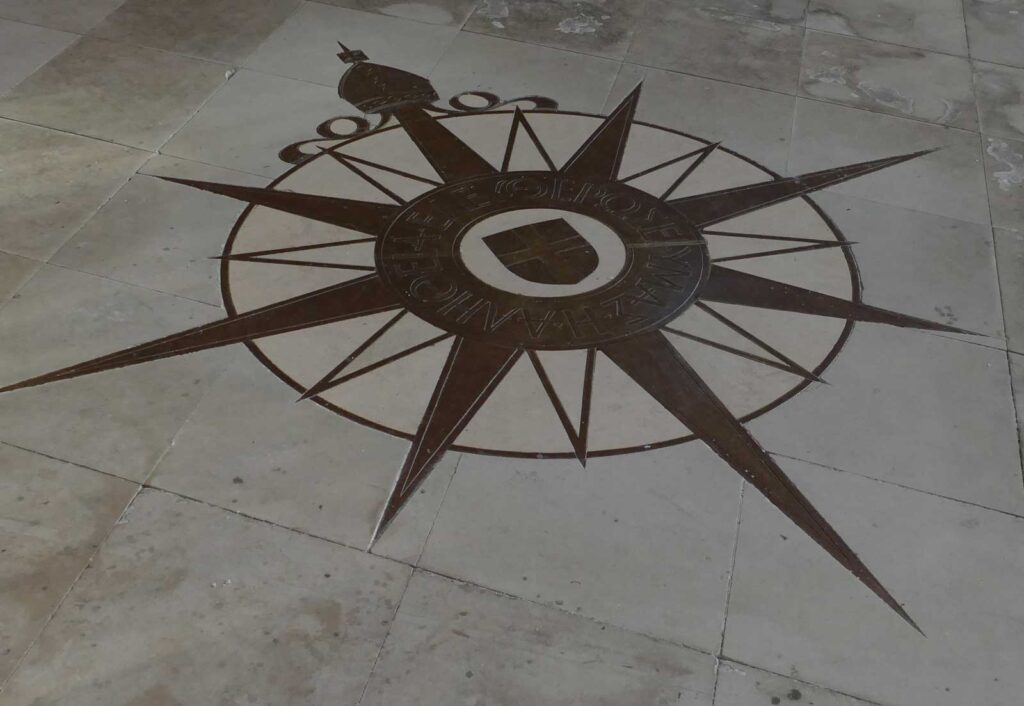Basics
Geology: oolitic limestone
Age: Middle Jurassic
Provenance: Chassagne-Montrachet, Côte-d’Or department in eastern France.
Where to see examples
The Compass Rose in the nave
Description
Commonly known as Chassagne Beige or Chassagne Rose, or sometimes Chassagne Beige Rosé, the latter two varieties possessing a pinkish hue. A third variety Chassagne gris is grey in colour. The stone was purchased for the cathedral as Chassagne Beige and, as the name suggests, it is an ’off-white’ beige colour. However, in certain light in does possess a slight pink tinge, probably from the presence of a small quantity of oxidised iron. The material is extremely hardwearing and consequently suitable as flooring stone. At the time of installation in 1988 the clerk of the works said that “The stones had to be cut in the form of a jigsaw to complete the central sections of the Compass Rose …”.
Stone from the quarries is said to have been used in part in the construction of the Louvre in Paris and the War Museum in Washington in the United State. The quarries were first opened in the early nineteenth century and since the 1970s production has been greatly increased with much of the stone produced used for paving.

